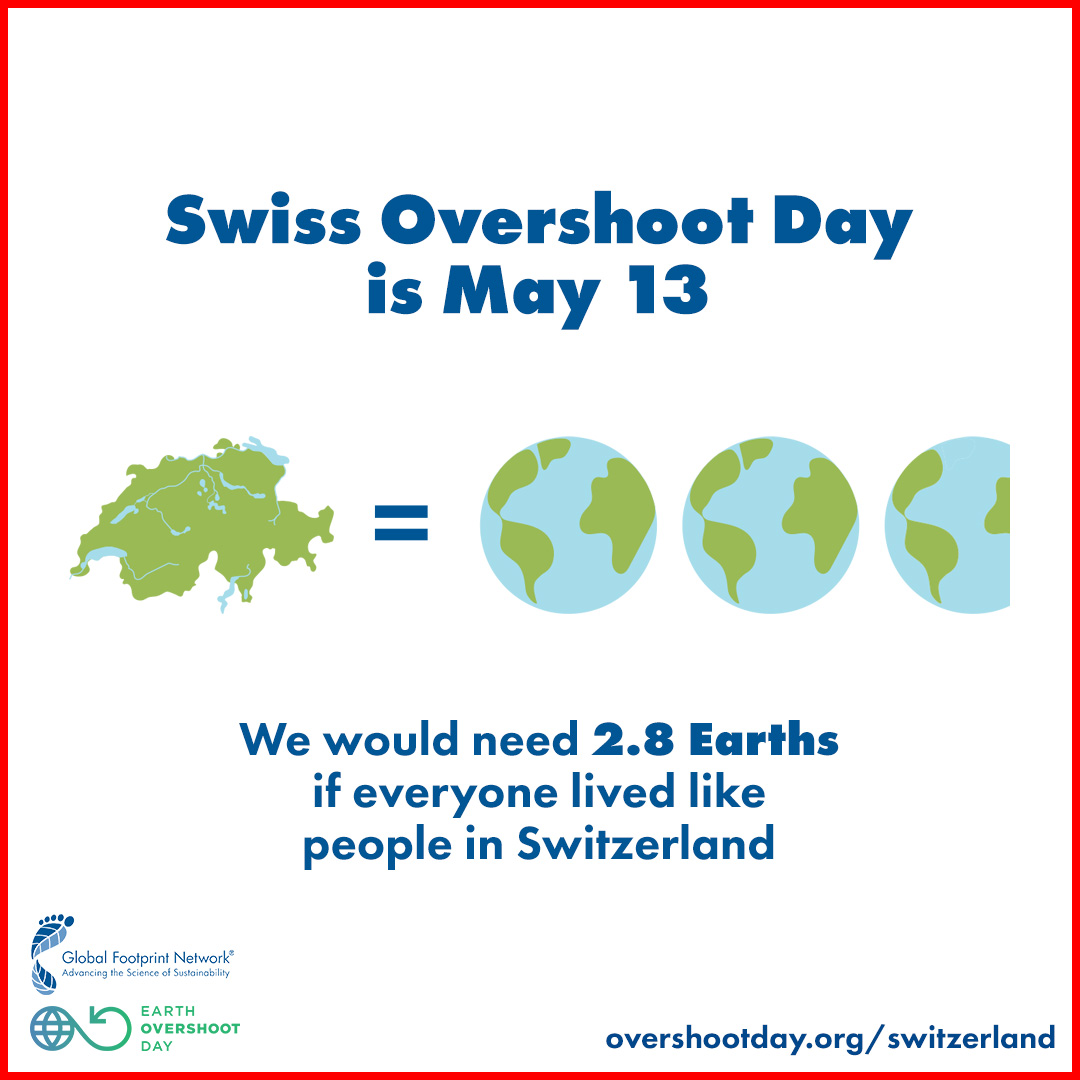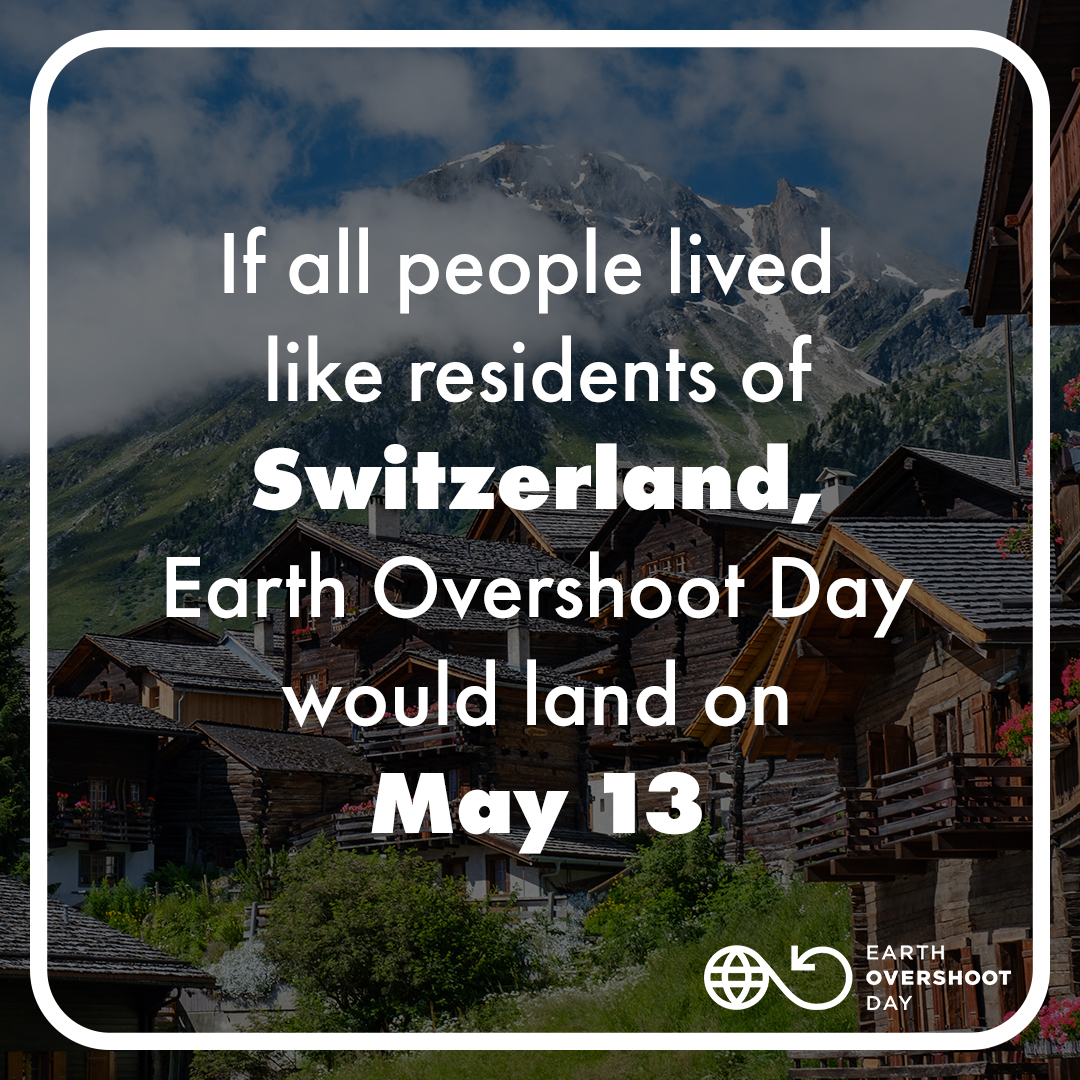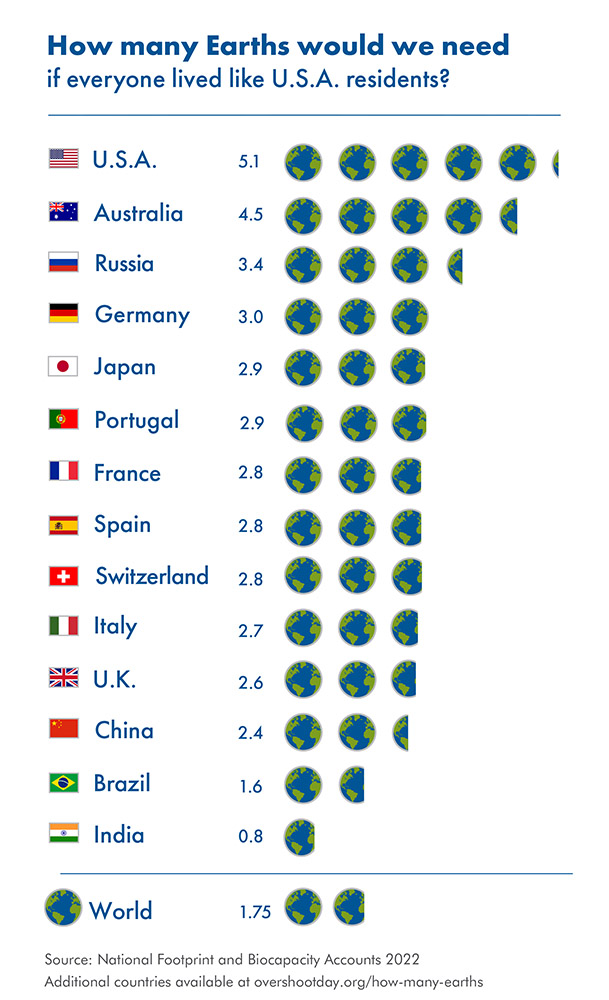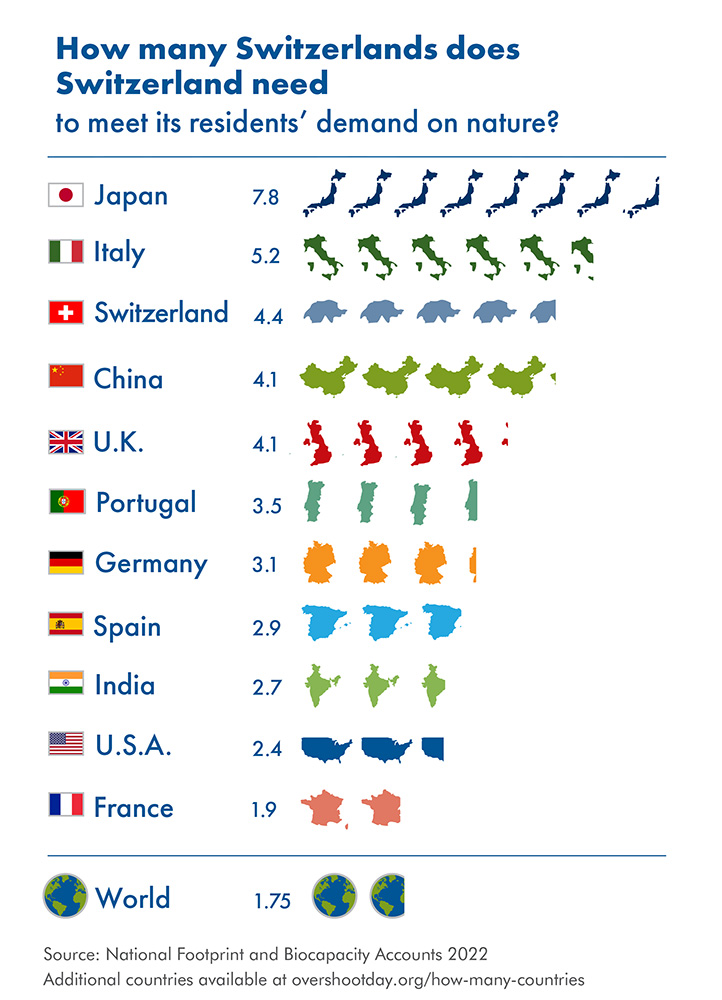The future has never been more predictable. We know that people will want to eat and sleep. They also want to be mobile, feel safe, and have fun. In addition, it is evident that we will live in a world with more climate change and more resource constraints. This is true in every imaginable scenario. Resource security is turning into a central parameter of economic strength. The war in Ukraine and the resource disruptions it causes serves as an illustration.
All of us will have to function without fossil fuel, whether we like it or not. The question is “by when?”. A rapid energy and resource transition will reward the world with less extreme climate change and the actor with a far more robust resource situation. Just consider that, today, Switzerland consumes 4.4 times more than its own ecosystems can regenerate. In contrast, a slow phase-out of fossil energy increases the risk of increased stranded assets, global tensions, and political unrest. Food security thus also becomes more critical, with direct implications for Switzerland’s globally integrated economy.
Those who delay their own energy and resource transition expose themselves to increasingly large and uneven risks. Inequalities grow between those who prepare wisely and build resilience, and those who wait, weakening themselves. Those who fail to embrace change will fall behind. It is a double risk, as they will be fragile in an increasingly fragile world. “It is unclear whether Switzerland has the resolve to prepare itself adequately for the predictable future of climate change and resource constraints, particularly after the CO2 law was rejected just a year ago” said Mathis Wackernagel, president of Global Footprint Network. “While good efforts exist in Switzerland such as boosting thermal efficiency of houses or using electricity from hydropower, the country overall is still far from being planet compatible. The gap keeps being immense.”
Of Switzerland’s overall demand, food consumption alone requires the capacity of more than one entire Switzerland. The same amount is needed to maintain Swiss mobility. 77% of the biological resource requirement of the Swiss comes from abroad. Housing requires about 1/6th of the entire demand. contributing significantly to the overall resource demand of economies. Therefore, we have partnered with Eberhard, a construction company, who is leading in new ways to reduce the impact of building materials. Patrick Eberhard, CEO of that company, emphasizes that “infrastructure has tremendous lock-in effects. For the better or the worse. Therefore, getting construction right is a big piece of the puzzle.”
Cities, companies or countries that fail to prepare for the foreseeable future will be largely disadvantaged. Acting fast, while also getting it right, will become increasingly essential as the physical infrastructure of cities and companies can only be adapted slowly, slower than the resource-constrained future is descending upon us. How is Switzerland positioned? What are our options?
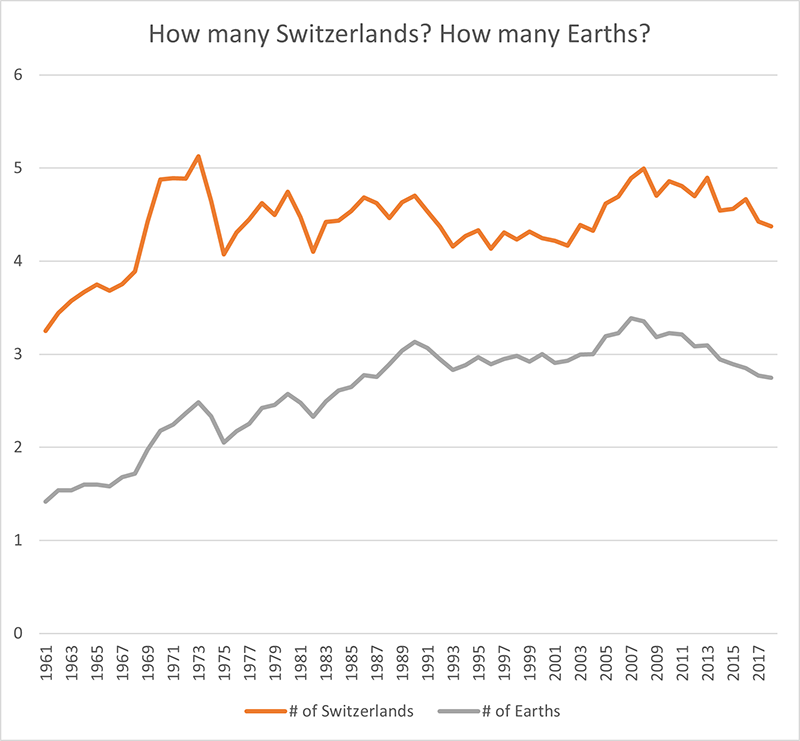
The figure above charts the number of Switzerlands needed to support Switzerland’s resident’s annual resource consumption against the number of Earths needed if all people lived like residents of Switzerland.
One thing is obvious. The speed and scale at which Switzerland is transforming its economy keeps eroding Switzerland’s longer-term prospects.

